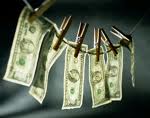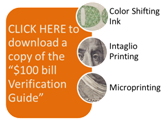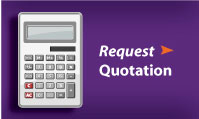In 2009 the U.S. Treasury reported that over $400 Million in counterfeit currency was circulating in the U.S.
 Counterfeit money detection is as important to your business as the product or service you are providing. After all, considering the amount of effort, resources, time and attention that you've invested in your product or service, protecting yourself from counterfeit money should be a priority. Whether you are considering buying counterfeit money detection equipment or investing time and energy into training your staff, counterfeit money detection procedures will only enhance your business's bottom line.
Counterfeit money detection is as important to your business as the product or service you are providing. After all, considering the amount of effort, resources, time and attention that you've invested in your product or service, protecting yourself from counterfeit money should be a priority. Whether you are considering buying counterfeit money detection equipment or investing time and energy into training your staff, counterfeit money detection procedures will only enhance your business's bottom line.
Is your business protected against counterfeit money?
Ask yourself these 3 questions.
- Is my staff knowledgeable about the security features on printed money?
- Does my business have a counterfeit money detection procedure?
- Do I have any technical means for detecting counterfeit currency?
If you answered "no" to any of these questions you may be at risk of receiving counterfeit currency. To reduce the risk of receiving counterfeits it's important to have a procedure in place for accepting money and training your staff to recognize the security features inherent in U.S. (and other) currency. If your business routinely handles large sums of cash, specialized tools designed specifically for counterfeit money detection is recommended.
5 Security Features of U.S. Currency
The following security features are called overt features. These are security features that are verifiable during a visual inspection of the bill.
- Color-shifting Ink - Look at the denomination numeral in the lower-right hand corner of the face of the bill. Tilt the angle of the bill back and forth and the ink should "shift" from grey to green.
- Security Thread - Since 1990 U.S. currency in denominations of $5 and up have an embedded security thread running from the top to the bottom of the bill. Different denominations have different locations of the strip. Compare the location of the strip to genuine bills to prevent washed bills (washing is the process of printing large denomination bills over smaller, bleached out bills).
- Watermark - The watermark is evident on all $5 to $100 bills since 1999. IT is located next to the portrait and can be seen if held up to the light.
- Micro Printing - Micro printing,(technically a "covert" security feature since it can not be seen with the naked eye) is the result of extremely fine detailed carving. If practical, examining the bill with a magnifying glass will reveal several areas of micro printing on each bill. Examples include the USA Twenty or USA 40 written on the bill in crisp, sharp lettering.
- Intaglio Printing - This is the process of combining finely detailed carving with high pressure plates used during printing. The high pressure plates, embed the ink into the paper causing it to "depress" the paper and giving it a distinctly "raised" feel.

While, training your staff to look for these features, often, in a busy environment, employees often don't take the time to fully examine the currency. Investing in some relatively inexpensive counterfeit money detection equipment could be the difference.
Counterfeit Money Detection Tools
- Infra-Red Viewer - small and compact these are designed to detect the IR ink embedded in U.S. Currency.
- Magnetic Ink Detector - Called MICR (Magnetic Ink Character Recognition) small handheld device designed to detect the magnetic ink character sets. Some MICR Detector sell for less than $10.00.
- UV Lights - Ultraviolet lights detect the "invisible" security features present in U.S. currency. Small and relatively inexpensive.
- Machine Readable Character Devices (MRC) - These sophisticated counterfeit money detection tools recognize certain patterns in the IR and UV ink printing.
Having a comprehensive process in place, providing adequate training for your people to recognize counterfeit currency and giving them the technology to do so is your best protection against loss.



